 August 20, 2020 John E. Ross, KD8IDJ, Editor
| ||||||
IARU Announces HF Digital Mode Band Plan Review An International Amateur Radio Union (IARU) working group has been formed to develop solutions to reduce congestion within very popular mode segments while preventing mutual interference between "incompatible modes" as much as possible. The working group includes representatives of the three regional band-planning committees, marking the first time the three IARU regions have joined together to directly coordinate band-planning efforts. "Because frequency allocations and amateur radio operating interests vary in different parts of the world, the development of band plans -- The IARU says this approach to band planning has generally kept pace with the evolution of amateur radio operating, but the explosive growth in HF digital modes, particularly FT8, has led to perceived overcrowding of HF digital-mode band segments. The new working group has already had fruitful discussions with the WSJT Development Group headed by Joe Taylor, K1JT. Additional discussions including other HF stakeholders will be held as part of a fundamental review of the different HF digital modes, and how they can best be categorized and arranged to share the limited spectrum available. In recent years, moves have been made to bring the regional band plans into alignment wherever possible. Final approval of any band plan revisions typically occurs during regional conferences of IARU member-societies, held every 3 years on a rotating basis. Due to recent administrative changes, however, revisions can be implemented without having to wait for the regional conferences. Amateur Radio Stood Ready for Isaias Throughout Storm's East Coast Visit In a hurricane season now predicted to be worse than originally thought, Hurricane/Tropical Storm Isaias was an opportunity for amateur radio volunteers along the US eastern seaboard to exercise their preparedness. The Hurricane Watch Net (HWN) In Southern Florida, Section Emergency Coordinator (SEC) John Wells, W4CMH, said Indian River County Amateur Radio Emergency Service had operators at three shelters, and a few clients housed overnight on August 1. St. Lucie County went to Level 1 (full activation) on August 1, but no shelters were opened, and no ARES members were deployed. "St. Lucie County ARES was operational from a remote location, although they were prepared to staff the radio room at the Emergency Operations Center (EOC)," Wells said. Northern Florida ARES was never called up, but members did monitor the situation. "We are still early in the season, and I hope it will be a quiet year, but time will only tell," said Northern Florida SEC Karl Martin, K4HBN. "The New York City-Long Island Section had a lot of downed trees and wires across the whole island," NYC-Long Island Section Manager Jim Mezey, W2KFV, reported. "ARES was in standby mode for the Red Cross and other served agencies. Many clubs had information nets "All is well for the most part in Southern New Jersey," Section Manager Tom Preiser, N2XW, reported. "We were inundated with power outages. We activated SKYWARN and made reports to NWS-Mount Holly. Many trees and tree limbs are down, and there was a great deal of activity on the repeaters." Delaware SEC Dave Scott, KC3BEJ, reported nearly 5 inches of rain in the northern part of the state. "Areas of central Delaware -- around Dover Air Force Base and southern New Castle County -- got a good punch in the nose, with several confirmed tornadoes," he said. Several tractor trailer trucks tipped over on Route 1 in southern New Castle County and some 60,000 people statewide lost power. "There was no call for amateur radio assistance from any state, county, or municipal emergency management authorities," Scott said. "Most of our regular repeaters remained fully operational." An emergency frequency of 3.905 MHZ allowed good communication with southern Delaware. "Storm Isaias moved rapidly through the Eastern and coastal areas of Eastern New York saw Isaias as a tropical storm that came directly up the Hudson Valley from the Greater New York City area, said Section Emergency Coordinator Dave Galletly, KM2O. On August 4, the NWS in Albany issued a tornado watch for mid- and upper-Hudson River Valley counties, and a SKYWARN net was initiated on a regional repeater. Two more tornado warnings, several flash flood warnings, and high wind advisories were issued before the net shut down. Radio amateurs filed multiple reports of flash flooding, road closures, and ARES volunteers in the Eastern Massachusetts Section supported the NWS-Norton office's SKYWARN program, with winds gusting to 70 MPH, leading to downed trees and power lines. "Just to our west, conditions were significantly worse," Eastern Massachusetts SEC Rob Macedo, KD1CY, reported. The NWS-Norton SKYWARN program encompasses neighboring ARRL New England Sections. "Connecticut had a top-five event for total number of power outages," Macedo said, noting some 700,000 customers without power. ARES/SKYWARN teams in Connecticut and Rhode Island collaborated on damage assessment. ARES members in Vermont, a state not typically associated with tropical cyclones, initiated VHF and HF nets to share information on conditions. "Participation by ARES and RACES members was high," reported SEC Cathy James, NQ1B. "It was clear that storm conditions were not as bad as predicted." [Editor's note: This article represents a select summary of amateur radio activities during the passage of Isaias.] New Smartphone App Can Identify Unknown Data Modes An incredible number of digital-mode radio signals occupy the spectrum, and it's not always possible to identify the particular mode of operation. CW, PSK31, and FT8 are pretty easy, but how about CIS405, STANAG, or CHIP64? A new smartphone app can simplify things. SignalID can recognize about 20 signal modes (more may be Using it is simple. Once the frequency and bandwidth have been set, the user places the cell phone's microphone near the receiver's speaker, presses the large button, and waits for 5 seconds. The quieter the external environment is, the fewer errors. "The algorithm is based on frequency, [so incorrect tuning] will result in an erroneous detection. The recording is limited to 5 seconds, for practical reasons. Mode recognition may require several attempts, the developer, Tortillum, said, and upgrades are already in the works. "The easiest way to try [it] is RTTY or STANAG," the developer added. The very few comments so far from users suggest some further work may be needed, but they praised the concept. The developer invites additional comments. The application, which includes a complete list, could prove a valuable tool in determining the types of emissions that may stray into amateur radio bands. A demonstration video is available. -- Thanks to Southgate Amateur Radio News via Stephen Walters, G7VFY ARRL Podcasts Schedule
The On the Air and Eclectic Tech podcasts are sponsored by Icom. Both podcasts are available on iTunes (iOS) and Stitcher (Android), as well as on Blubrry -- On the Air | Eclectic Tech. Rene Fonseca, NP3O, Elected as Puerto Rico Section Manager Rene Fonseca, NP3O, has been elected as ARRL Puerto The Puerto Rico SM election was the only contested election in the summer round of voting. Ballots were counted on August 18 at ARRL Headquarters.
The following incumbent SMs ran unopposed and were considered elected. Chuck Motes, K1DFS (Connecticut); Dan Marler, K7REX (Idaho); Scott Yonally, N8SY (Ohio); Kevin O'Dell, N0IRW (Oklahoma); Barry Porter, KB1PA (Southern Florida); Fred Kleber, K9VV (Virgin Islands), and Laura Mueller, N2LJM (Western New York). All new terms begin on October 1. James Armstrong, NV6W, Named Santa Clara Valley SM James Armstrong, NV6W, of San Jose, California, was appointed as Santa Clara Valley (SCV) Section Manager following the untimely His appointment by ARRL Radiosport and Field Services Manager Bart Jahnke, W9JJ, followed consultation with ARRL Pacific Division Director Jim Tiemstra, K6JAT. Armstrong served as an Assistant SM in the SCV Section since 2013. A ham for more than 40 years, Armstrong also holds a Second Class Radiotelegraph Operator certificate, a General Radiotelephone Operator license, and a GMDSS Radio Operator/Maintainer license, all with ship radar endorsements. The K7RA Solar Update Tad Cook, K7RA, Seattle, reports: Sunspots disappeared on 4 days of the past week, but then returned. The average daily sunspot number declined from 14.3 to 5.4, while average daily solar flux went from 73.8 to 71. Geomagnetic indicators remain quiet. Average daily planetery A index increased from 3.7 to 4.4.
Predicted planetary A index is 16, 8, and 5 on August 20 - 22; 8 on August 23 - 25; 5 on August 26 - 28; 8, 16, and 8 on August 29 - 31; 5 on September 1 - 14; 10 on September 15 - 16; 5 on September 17 - 24; then 8, 16, and 8 on September 25 - 27, and 5 on September 28 - October 3. Sunspot numbers for August 13 - 19 were 11, 0, 0, 0, 0, 12, and 15, with a mean of 5.4. The 10.7-centimeter flux was 72.3, 70.8, 70.6, 70.9, 70.8, 71.3, and 70.5, with a mean of 71. Estimated planetary A indices were 4, 4, 3, 4, 3, 7, and 6, with a mean of 4.4. Middle latitude A index was 5, 3, 3, 5, 3, 7, and 9, with a mean of 5. A comprehensive K7RA Solar Update is posted Fridays on the ARRL website. For more information concerning radio propagation, visit the ARRL Technical Information Service, read "What the Numbers Mean...," and check out K9LA's Propagation Page. A propagation bulletin archive is available. For customizable propagation charts, visit the VOACAP Online for Ham Radio website. Share your reports and observations. Just Ahead in Radiosport
See the ARRL Contest Calendar for more information. For in-depth reporting on amateur radio contesting, subscribe to The ARRL Contest Update via your ARRL member profile email preferences. New Contest for Portable Stations to Debut A new amateur radio contest for portable operators -- the Fox Mike Hotel Portable Operations Challenge (POC) -- will debut October 3 - 4. The event is aimed at leveling the competitive playing field between fixed stations and portable stations. Scoring for the POC, based upon a kilometers-per-watt metric, will be handicapped in favor of the "NCJ's role is to encourage hams who don't contest to give it a try," NCJ Editor Dr. Scott Wright, K0MD, said. "It will encourage activity by operators who are limited by real estate and do not have a full-blown contest station. Events like this stimulate more interest in contesting, and this will have an international scope to give chances to snare some new DXCC entities." The contest rules say scoring will be calculated using the distance between stations (Maidenhead grid squares) in kilometers divided by power output in watts. Fixed (QTH) stations will compete against portable (P) stations on 80, 40, 20, 15, and 10 meters. Allowable modes include phone, CW, and digital. The exchange is call sign, station class (P or Q), consecutive serial number, and four-character grid square. Contact Howell for more information. Read more. Technology and Technique Making Ham Radio Testing Possible During Pandemic Amateur radio license testing continues during the pandemic, with a combination of remote Volunteer Examiner (VE) test sessions and careful in-person session planning. In Hawaii, VE Team leader and Section Manager Joe Speroni, AH0A, said he and his team passed the 100-candidate mark on August 10 for video-supervised remote test "Candidates from all Hawaiian Islands, Puerto Rico, Guam, and US military bases in Okinawa have had an opportunity to sit for licenses," he told the ARRL Volunteer Examiner Coordinator. "The high pass rate of 95% is most likely due to candidates having had time to prepare for the exam." Speroni also said his VEs' willingness to contribute their time has made the program a success and available to a wide geographical range. "Zoom meeting video lends itself to handling three candidates per session, and each requires three VEs," Speroni explained. "The 1:1 ratio of candidates to VEs makes planning important. Fortunately, the team of 15 VEs has volunteers from Oahu, Maui, the Big Island, California, and the Pacific. Often, hams from Okinawa and Guam are helping to license and upgrade hams in Hawaii." The COVID-19 pandemic has affected licensing numbers as well as testing protocols. ARRL VEC Manager Maria Somma, AB1FM, reports that through the end of July, overall FCC license activity was down by 15% compared to the same period last year. New amateur licenses are down by 12% so far in 2020, with 15,849 new licensees compared to 17,947 in 2019. "Upgraded licenses are down by a staggering 23% -- 6,501 versus 4,984," Somma said. "The year-end prediction of 7,500 upgrades is much lower than in previous years, which have averaged around 9,500." On the other side of the US, Rhode Island Section Manager and VE Bob Beaudet, W1YRC, reports his club, the Blackstone Valley Amateur Radio Club, conducted a "pandemic-compliant" open-air test session "Our governor in Rhode Island has directed citizens not to congregate in groups greater than 15 outdoors," Beaudet said, estimating that group size remained at around that number at any given time as candidates arrived and left. "Some came early and left as new people arrived," he said. "Also, we were rather widely spread out in the parking lot." Everyone wore masks and observed appropriate social distancing. The VEs grading and processing applications were also spread widely apart. "We planned to keep applicants a car width apart from one another, but many applicants came in rather large trucks," Beaudet recounted. "That changed our parking pattern a little." The session accommodated one candidate who was severely vision impaired and successfully upgraded to a General-class license, with a VE reading the questions and recording his answers. -- Thanks to Joe Speroni, AH0A, and Bob Beaudet, W1YRC Intrepid-DX Group Announces Winners of Youth "Dream Rig" Essay Contest The Intrepid-DX Group has announced the winners of its first annual Youth "Dream Rig" Essay Contest. "We received over 60 essays from young amateurs from all over the world," said Intrepid-DX Group President Paul Ewing, N6PSE. "The essays were unique in thought The first-place winner and recipient of an Icom IC-7300 transceiver is Faith Hannah Lea, KD3Z. She will also receive a vertical flagpole antenna from Greyline Performance Antennas, a deluxe headset from Heil Sound, a Powerwerx switching power supply donated by Steve Jones, N6SJ, and a QRP Nano Morse Key-25-811P from GigaParts. In second place was Charlie Meadows, N4VTI, who received a Yaesu FT-65 handheld transceiver donated by Ewing. In addition, he'll get a $50 DX Engineering gift card from David Jorgensen, WD5COV. Patrick Gawthrop, W9GGG, was the third-place winner and recipient of a BaoFeng BF-F8HP handheld transceiver donated by Ewing. He will also receive a $50 DX Engineering gift card from Jorgensen. "Having read over 60 essays this week, we can tell you that our youth are full of great ideas and they are brimming with enthusiasm to keep our hobby alive well into the future," Ewing said. The Intrepid-DX Group will publish several of the essays on its Facebook page. Read more. Announcements
Past Puerto Rico Section Manager Victor Madera, KP4PQ, SK Victor Madera, KP4PQ, who served as Puerto Rico's Section Manager from 2000 until 2007, died on July 23. An ARRL Life Member, he was 90 years old. Madera was instrumental in translating amateur radio study guides and test materials into Spanish. Upon his retirement as Section Manager, Madera was awarded the Knight First licensed in 1951, Madera served in the US Army Signal Corps during the Korean War. He held a Bachelor's degree in electrical engineering from the University of Puerto Rico in Mayagüez, later serving as the director of manufacturing for Westinghouse in Puerto Rico and Haiti. He retired early due to health issues. Madera held several ARRL Field Organization appointments over the years, including Official Observer, Public Information Officer, State Government Liaison, and Assistant Director for the ARRL Southeastern Division. He served as team liaison/coordinator for the ARRL Volunteer Examiner team in Puerto Rico and was International Amateur Radio Union Region 2 auxiliary monitor. Madera was a member of the Radio Club of America (RCA), the Quarter Century Wireless Association (QCWA), and the Puerto Rico Amateur Radio Club -- Federación de Radio Aficionados de Puerto Rico. He was the founder and first president and secretary of the Puerto Rico Amateur Radio League (PRARL) -- an ARRL Special Service Club. Read more. Upcoming ARRL Section, State, and Division Conventions Note: Many conventions and hamfests have been canceled or postponed due to the coronavirus pandemic. Check the calendar of canceled events on the ARRL website.
Find conventions and hamfests in your area. ARRL -- Your One-Stop Resource for . .
Subscribe to...
Free of charge to ARRL members...
| ||||||
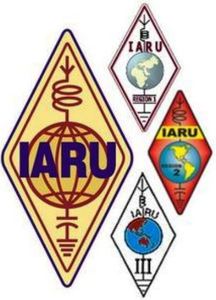 voluntary guidelines on the use of the spectrum that is available to radio amateurs -- is a responsibility of the three IARU regional organizations," the IARU explained in announcing the working group. "Each of the three regions has a band-planning committee to focus on this work."
voluntary guidelines on the use of the spectrum that is available to radio amateurs -- is a responsibility of the three IARU regional organizations," the IARU explained in announcing the working group. "Each of the three regions has a band-planning committee to focus on this work.".jpg) initiated two sessions, totaling more than 50 hours to track Isaias as it approached landfall.
initiated two sessions, totaling more than 50 hours to track Isaias as it approached landfall.(1).jpg) helping people to find needed supplies." Power was lost for a time in some areas.
helping people to find needed supplies." Power was lost for a time in some areas..jpg) Maryland," Maryland-DC (MDC) Section Manager Marty Pittinger, KB3MXM, told ARRL. "From onset to conclusion, tropical storm conditions lasted approximately 12 hours." Two Maryland counties more than 100 miles apart received tornado damage, while high wind-driven rain soaked much of the region. Pittinger reported, "The MDC Section was in touch with a regional Red Cross representative and state emergency managers, and our ARES [volunteers] maintained awareness." Hospitals and the health department in Prince George County were advised that ARES was on standby for them.
Maryland," Maryland-DC (MDC) Section Manager Marty Pittinger, KB3MXM, told ARRL. "From onset to conclusion, tropical storm conditions lasted approximately 12 hours." Two Maryland counties more than 100 miles apart received tornado damage, while high wind-driven rain soaked much of the region. Pittinger reported, "The MDC Section was in touch with a regional Red Cross representative and state emergency managers, and our ARES [volunteers] maintained awareness." Hospitals and the health department in Prince George County were advised that ARES was on standby for them.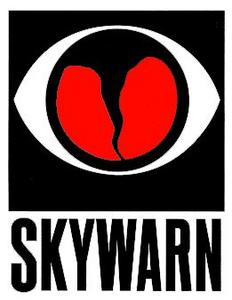 wind damage. "Record-setting rainfall was reported across the forecast area," Galletly added.
wind damage. "Record-setting rainfall was reported across the forecast area," Galletly added.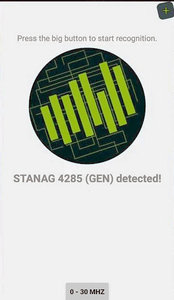 on the way), in just 5 seconds of recording time. The app is open source and free.
on the way), in just 5 seconds of recording time. The app is open source and free.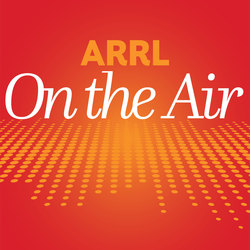 The latest episode of the On the Air podcast (Episode 8) features an interview with brothers Andy, KK4LWR, and Tony, KD8RTT, Milluzzi about the ARRL Collegiate Amateur Radio Initiative. The On the Air podcast is a monthly companion to On the Air magazine, ARRL's magazine for beginner-to-intermediate ham radio operators.
The latest episode of the On the Air podcast (Episode 8) features an interview with brothers Andy, KK4LWR, and Tony, KD8RTT, Milluzzi about the ARRL Collegiate Amateur Radio Initiative. The On the Air podcast is a monthly companion to On the Air magazine, ARRL's magazine for beginner-to-intermediate ham radio operators. The latest episode of the Eclectic Tech podcast (Episode 14) deals with interference issues and features a chat with David Hodge, N6AN, about his work at Caltech with the radio astronomy team.
The latest episode of the Eclectic Tech podcast (Episode 14) deals with interference issues and features a chat with David Hodge, N6AN, about his work at Caltech with the radio astronomy team.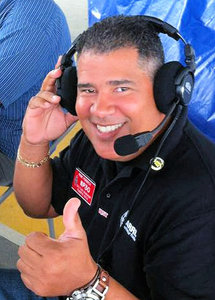 Rico Section Manager (SM), defeating two other candidates, including incumbent Oscar Resto, KP4RF. Fonseca, of Fajardo, received 85 votes; Juan Sepulveda Mercado, KP3CR, garnered 48 votes, and incumbent Section Manager Oscar Resto, KP4RF, got 31 votes. Resto has been Puerto Rico's Section Manager since 2016. An ARRL Life Member, Fonseca is returning as SM, having served previously from 2012 to 2016.
Rico Section Manager (SM), defeating two other candidates, including incumbent Oscar Resto, KP4RF. Fonseca, of Fajardo, received 85 votes; Juan Sepulveda Mercado, KP3CR, garnered 48 votes, and incumbent Section Manager Oscar Resto, KP4RF, got 31 votes. Resto has been Puerto Rico's Section Manager since 2016. An ARRL Life Member, Fonseca is returning as SM, having served previously from 2012 to 2016.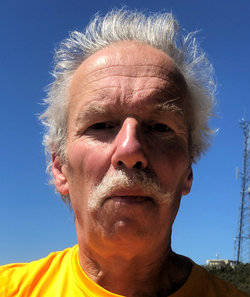 death on July 28 of incumbent Bill Ashby, AA6FC, just 4 weeks after he took office. An ARRL Life Member, Ashby, also of San Jose, was 66 and the only nominee for the position when nominations closed in March. Ashby had earlier served as the Affiliated Club Coordinator from 2007 to 2010. Armstrong will fulfill the remainder of the term, which expires on June 30, 2022.
death on July 28 of incumbent Bill Ashby, AA6FC, just 4 weeks after he took office. An ARRL Life Member, Ashby, also of San Jose, was 66 and the only nominee for the position when nominations closed in March. Ashby had earlier served as the Affiliated Club Coordinator from 2007 to 2010. Armstrong will fulfill the remainder of the term, which expires on June 30, 2022.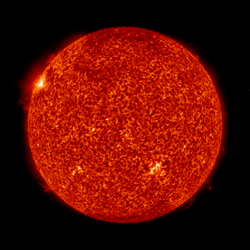 Predicted solar flux is 70 on August 20 - 26; 71 on August 27; 72 on August 28 - 29; 73 on August 30 - September 5; 72 on September 6 - 9; 71 on September 10 - 11; 70 on September 12 - 19; 71 on September 20 - 23; 72 on September 24 - 25; 73 on September 26 - October 2, and 72 on October 3.
Predicted solar flux is 70 on August 20 - 26; 71 on August 27; 72 on August 28 - 29; 73 on August 30 - September 5; 72 on September 6 - 9; 71 on September 10 - 11; 70 on September 12 - 19; 71 on September 20 - 23; 72 on September 24 - 25; 73 on September 26 - October 2, and 72 on October 3. portables. The contest is the brainchild of Frank Howell, K4FMH. Sponsors include National Contest Journal (
portables. The contest is the brainchild of Frank Howell, K4FMH. Sponsors include National Contest Journal (.png) sessions. Speroni said the most recent session administered exams to 10 candidates simultaneously.
sessions. Speroni said the most recent session administered exams to 10 candidates simultaneously.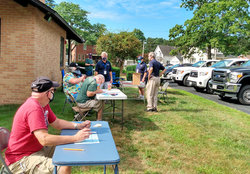 on August 8.
on August 8..jpg) and very well-articulated. Extra points were given for proper grammar, punctuation, and spelling. Most of the essays gave unique perspectives on how to reach out and connect with the youth of today. We will be sharing those ideas in subsequent postings."
and very well-articulated. Extra points were given for proper grammar, punctuation, and spelling. Most of the essays gave unique perspectives on how to reach out and connect with the youth of today. We will be sharing those ideas in subsequent postings."(1).jpg) The High-frequency Active Auroral Research Program (
The High-frequency Active Auroral Research Program (.jpg) Distinguished Service Award in recognition of his outstanding service as a Section Manager.
Distinguished Service Award in recognition of his outstanding service as a Section Manager.







